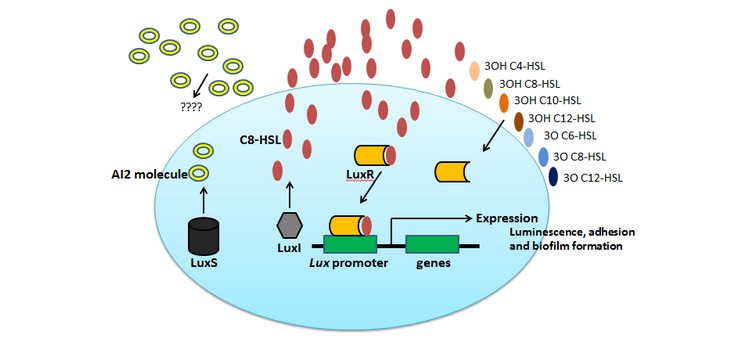Characterization of Shewanella woodyi Quorum Sensing systems and its role in the adhesion and biofilm formation of this bacterium
Supervisor: MOLMERET Maëlle
Co-supervisor: BLACHE Yves, BARAQUET Claudine
Abstract
Quorum sensing (QS) or cell-to-cell communication is a process by which bacteria produce and detect signal molecules and thereby coordinate their behavior in a cell-density dependent manner. Two main QS systems can be distinguished: the acylhomoserine lactone (AHL) and the autoinducer-2 (AI-2). The sequenced genome of the marine bioluminescent Shewanella woodyi MS32 contains genes coding for these two main QS systems. This work aims at identifying the QS communication systems present in this bacterium and understanding its role in luminescence production and biofilm formation. The objective is also to find molecules that interfere with QS processes to inhibit adhesion and biofilm formation.
By coupling bacterial biosensor assays and high resolution liquid chromatography mass spectrometry (LCMS), we showed that S. woodyi synthesized both a N-octanoyl-l-homoserine lactone (C8-HSL) and the AI2 QS molecule. However, only HSL molecules influence the luminescence of S. woodyi in particular oxo and hydroxy derivatives.
Several commercial molecules, identified for their inhibitory effect on the AI2 QS system of Vibrio harveyi Inhibited the luminescence of S. woodyi and reduced adhesion and biofilm formation, which led to the conclusion that AI-2 is not likely used as a quorum sensing signal and that LuxS is involved in the activated methyl cycle (AMC) in S. Woodyi.
This study is the first documentation that characterizes the QS system in S. Woodyi.



